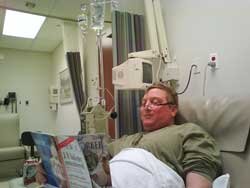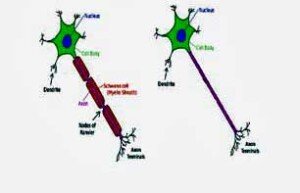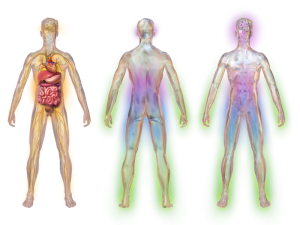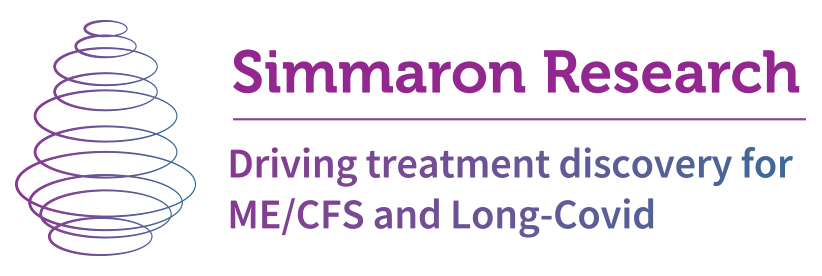Symposium Calls For Use of Immunotherapy To Treat Chronic Pain
“Despite the availability of different drugs, most patients with chronic nociceptive pain do not receive satisfactory pain relief…”
We all know the medical profession is poor at providing pain relief in general, but its record with regards to neuropathic or nerve pain is something else indeed. Despite the fairly large array of drugs physicians use (few of which were developed to reduce nerve pain), no more than 30-40% of nerve pain patients receive as much as 50% relief from the medications doctors provide. Despite research that has uncovered important factors in the production of pain, much clearly remains to be learned. The production of pathological pain has been shown to be a very complex process. Researchers know, for instance, that damage to the ion channels on nerves, increased levels of excitatory neurotransmitters and reduced activity in the pain inhibition pathways in the brain all play a role.These authors suggest, though, that a critical component of the pain production pathway - the immune system – has been, if not ignored, then not fully investigated. Studies show that a variety of immune components, from mast cells to macrophages and cytokines to the microglia play a role in pain production.Recent studies suggest that autoantibodies to the potassium channels - the dorsal root ganglia - key pain processing sites located just outside the spinal cord -are opening up new windows on how pathological pain may be produced.Other than corticosteroids and anti-inflammatories, however, few immune affecting drugs are used to fight pain. Human immunoglobulin G (IgG) is an immune drug these authors believe may be useful in pain disorders where evidence of increased cytokine production can be found. IgG can be delivered intravenously (IVIg) or subcutaneously (SCIg) and may work by suppressing the immune system.The fifteen members of this workshop came from Italy, Sweden, Switzerland, Japan, Canada, the U.K., and the U.S. to report on where and when IgG may be useful in treating chronic pain. Some studies were reported on and a good deal of the information derived from case studies.Symposia Report Immunoglobulin G for the Treatment of ChronicPain: Report of an Expert Workshop, Stefano Tamburin, MD, PhD,* Kristian Borg, PhD,†Xavier J. Caro, MD,‡ Stefano Jann, MD,§Alexander J. Clark, MD,¶ Francesca Magrinelli, MD,* Gen Sobue, PhD,** Lars Werhagen, PhD,†Giampietro Zanette, MD,†† Haruki Koike, PhD,**Peter J. Späth, PhD,‡‡ Angela Vincent, FRCPath,§§ and Andreas Goebel, MD, PhD¶¶ Pain Medicine 2014; 15: 1072–1082
Despite research that has uncovered important factors in the production of pain, much clearly remains to be learned. The production of pathological pain has been shown to be a very complex process. Researchers know, for instance, that damage to the ion channels on nerves, increased levels of excitatory neurotransmitters and reduced activity in the pain inhibition pathways in the brain all play a role.These authors suggest, though, that a critical component of the pain production pathway - the immune system – has been, if not ignored, then not fully investigated. Studies show that a variety of immune components, from mast cells to macrophages and cytokines to the microglia play a role in pain production.Recent studies suggest that autoantibodies to the potassium channels - the dorsal root ganglia - key pain processing sites located just outside the spinal cord -are opening up new windows on how pathological pain may be produced.Other than corticosteroids and anti-inflammatories, however, few immune affecting drugs are used to fight pain. Human immunoglobulin G (IgG) is an immune drug these authors believe may be useful in pain disorders where evidence of increased cytokine production can be found. IgG can be delivered intravenously (IVIg) or subcutaneously (SCIg) and may work by suppressing the immune system.The fifteen members of this workshop came from Italy, Sweden, Switzerland, Japan, Canada, the U.K., and the U.S. to report on where and when IgG may be useful in treating chronic pain. Some studies were reported on and a good deal of the information derived from case studies.Symposia Report Immunoglobulin G for the Treatment of ChronicPain: Report of an Expert Workshop, Stefano Tamburin, MD, PhD,* Kristian Borg, PhD,†Xavier J. Caro, MD,‡ Stefano Jann, MD,§Alexander J. Clark, MD,¶ Francesca Magrinelli, MD,* Gen Sobue, PhD,** Lars Werhagen, PhD,†Giampietro Zanette, MD,†† Haruki Koike, PhD,**Peter J. Späth, PhD,‡‡ Angela Vincent, FRCPath,§§ and Andreas Goebel, MD, PhD¶¶ Pain Medicine 2014; 15: 1072–1082
Sjogrens Syndrome
Sjogrens Syndrome (SS) is an autoimmune disorder mostly affecting women. Often misdiagnosed as other disorders, including ME/CFS and Fibromyalgia, SS can cause a wide variety of neuropathic (nerve) problems. Some evidence suggests that the neuropathic pain in SS, which can be quite severe, comes from neuron loss in the dorsal root ganglia perhaps caused by ‘cytotoxic autoimmunity” – a intriguing result given similar findings in some Chronic Regional Pain Syndrome patients.Of five patients treated with IgG for SS with severe neuropathic pain, all showed ‘remarkable’ reductions in pain (73% reduction VAS scale) within two weeks which lasted from two to six months. Long term follow-up indicated two had relapsed, but resumption of treatment was successful.
Some evidence suggests that the neuropathic pain in SS, which can be quite severe, comes from neuron loss in the dorsal root ganglia perhaps caused by ‘cytotoxic autoimmunity” – a intriguing result given similar findings in some Chronic Regional Pain Syndrome patients.Of five patients treated with IgG for SS with severe neuropathic pain, all showed ‘remarkable’ reductions in pain (73% reduction VAS scale) within two weeks which lasted from two to six months. Long term follow-up indicated two had relapsed, but resumption of treatment was successful.
Fibromyalgia
Several findings including increased cytokine levels in the skin and blood suggest the immune system plays a role in Fibromyalgia. An inverse correlation between Il-2 receptor levels and reduced nerve density in the skin (small nerve fiber neuropathy) suggested immune mediated nerve destruction had occurred. Studies reporting large nerve fiber demyelination in the periphery and reduced nerve fiber density in the skin suggest FM may in part be a neuropathic disorder. Pain symptoms in FM are similar to those reported by people with neuropathic pain.Caro found that from fifty to seventy percent of 45 FM patients responded positively (<50% reduction in pain) to IVIG ((0.4 g/kg/day for 5 days followed by 1.2 g/kg every 3 weeks, given as 0.4 g/kg/day). The pain reduction usually started five days after the end of the first course of IVIG and then peaked at 3-6 months. Relapse may occur after that.Caro, who has been treating and studying Fibromyalgia for decades, stated that he’s had more success using immune modulating treatments than using traditional approaches using FDA approved drugs.
Studies reporting large nerve fiber demyelination in the periphery and reduced nerve fiber density in the skin suggest FM may in part be a neuropathic disorder. Pain symptoms in FM are similar to those reported by people with neuropathic pain.Caro found that from fifty to seventy percent of 45 FM patients responded positively (<50% reduction in pain) to IVIG ((0.4 g/kg/day for 5 days followed by 1.2 g/kg every 3 weeks, given as 0.4 g/kg/day). The pain reduction usually started five days after the end of the first course of IVIG and then peaked at 3-6 months. Relapse may occur after that.Caro, who has been treating and studying Fibromyalgia for decades, stated that he’s had more success using immune modulating treatments than using traditional approaches using FDA approved drugs.
Post Poliomyelitis Syndrome (PPS)
Pain associated with poliomyelitis relapse decades after apparent recovery presents an interesting case for immune mediated therapies. The pain, which usually occurs in combination with muscle weakness and atrophy, and can be severe, is localized to the muscles and joints. Neuropathic pain usually occurs in combination with nerve compression or disc herniation.Structural components do not tell the entire story, however. Increased cytokine levels in the cerebral spinal fluid, serum and peripheral blood suggest systemic inflammation is present and may be contributing to pain.Four studies examining IVIG effectiveness in PPS found significant reductions in CSF cytokines, reduced TNF-a levels in the blood, significant clinical improvement, increased muscle power, quality of life and/or reduced pain. Decreased pain levels were still evident a year after treatment in one study.One of the authors reported 35% of PPS patients experienced a greater than 50% reduction in pain
Complex Regional Pain Syndrome (CRPS)
CRPS is one of the most painful disorders known. We saw in a recent blog that autoimmune processes appear to play a significant role in some CRPS patients.
An open-label trial of low-dose IVIG (0.5g/kg) found that 3/11 CRPS patients received >70% pain relief – an astounding feat in CRPS - after repeated treatments. Six of eleven received no benefit. The pain, unfortunately, returned to baseline levels within three months. In a small follow up trial three patients who had received >30% relief continued on a weekly maintenance dose (0.5g/kg or 1g/kg). Not only did two of the three patients experience ‘profound and sustained pain reduction” during the 3-12 months they were on the drug, but both remained in remission 12 months after the termination of the treatment.Given the successes the following “Liverpool” protocol was suggested in CRPS:
In a small follow up trial three patients who had received >30% relief continued on a weekly maintenance dose (0.5g/kg or 1g/kg). Not only did two of the three patients experience ‘profound and sustained pain reduction” during the 3-12 months they were on the drug, but both remained in remission 12 months after the termination of the treatment.Given the successes the following “Liverpool” protocol was suggested in CRPS:
- Patients should first be treated with an intravenous loading dose of 0.5 g/kg; if >40% pain relief is achieved, patients should—commencing 2 weeks after the loading dose—be offered
- a trial of 6–12 months of low-dose maintenance treatment; either 0.5 g/kg/month divided into weekly portions (or even smaller portions if a “push technique” is used instead of a pump) for subcutaneous therapy, or 0.5 g/kg every 3 weeks intravenously
- after 3–6 months an attempt should be made to halve these doses,
- after 6–12 months an attempt should be made to stop treatment.
A multicenter trial examining the efficacy of long term IVIG use in CRPS is currently underway in the UK.
Diabetic Polyneuropathy
Diabetes mellitus is the commonest cause of peripheral neuropathy. The most intense kind of peripheral neuropathy in diabetes is diabetic lumbosacral radiculoplexus neuropathy (DLRPN), an extremely painful and difficult to treat form of peripheral neuropathy.Eighty percent of five patients with diabetic polyneuropathy responded well to IVIG with pain intensity dropping from 77/100 on the Visual Analogue Scale (VAS) to 33. Pain reduction peaked at one to two months and one patient relapsed at seven months. The fact that general inflammatory markers (erythrocyte sedimentation rate, rheumatoid factor, antinuclear antibodies) are negative in DLRPN, yet anti-inflammatory treatments may be helpful suggests DLRPN consists of a local microvasculitis. Indeed, the reduction in pain with IVIG makes sense if ischemic damage to the nerve roots and peripheral nerves has been caused by a microvasculitis.Some patients that responded to IVIG do not respond to the immune suppressant effects of steroids.Distal Symmetric Painful Polyneuropathy is another form of polyneuropathy found in diabetes. Twelve patients for whom standard treatments were ineffective received either IVIg (0.4 g/kg/day for 5 days) or continued with their standard treatments.In the five diabetic patients treated with IVIg, mean pain intensity significantly dropped and 80% of patients were responders (i.e., pain reduced by >50%). The study was very small, but this was a far higher percentage of relief than achieved by traditional pain medications.
The fact that general inflammatory markers (erythrocyte sedimentation rate, rheumatoid factor, antinuclear antibodies) are negative in DLRPN, yet anti-inflammatory treatments may be helpful suggests DLRPN consists of a local microvasculitis. Indeed, the reduction in pain with IVIG makes sense if ischemic damage to the nerve roots and peripheral nerves has been caused by a microvasculitis.Some patients that responded to IVIG do not respond to the immune suppressant effects of steroids.Distal Symmetric Painful Polyneuropathy is another form of polyneuropathy found in diabetes. Twelve patients for whom standard treatments were ineffective received either IVIg (0.4 g/kg/day for 5 days) or continued with their standard treatments.In the five diabetic patients treated with IVIg, mean pain intensity significantly dropped and 80% of patients were responders (i.e., pain reduced by >50%). The study was very small, but this was a far higher percentage of relief than achieved by traditional pain medications.
Autoantibody Caused Pain
Autoantibody attack of neurons and glial cells has been definitively linked to central nervous system problems. In acquired neuromyotonia antibodies to the VGKC complex causes peripheral nerve hyperexcitability and pain symptoms similar to those found in FM (aching, cramping, shooting, lancing, or burning pains). (One study has found peripheral nerve excitability in Fibromyalgia.)These same antibodies have been linked to pain in Morvan’s syndrome and people with idiopathic pain. Immune therapies including IVIG and steroids have effectively reduced pain levels in some of these patients.These findings suggest that pain in autoimmune disorders such as multiple sclerosis and neuromyelitis optica may be amenable to IVIG. The authors called the arena of autoantibody induced pain via neuronal attack “ripe for investigation”.
Conclusions
“Polyvalent IgG represents a promising treatment in a number of chronic pain (neuropathic, nociceptive, and complex) conditions”
The Workshop participants propose that, in contrast to prevailing thought, that nerve or neuropathic pain may at times be immune mediated and respond well to immune therapies, in particular, antibody therapy. They note IgG is generally well tolerated with mild side effects, if any, but that costs are high (up to $8500 per protocol in the U.S.), and insurance reimbursement for pain can be problematic. Most of the evidence for IgG use in pain comes from case studies and rigorously controlled trials are needed. Much work remains to be done to validate these findings and at least study is underway. A successful outcome to the British IVIG study of CRPS – one of the most intractable and painful of all pain disorders – would surely open eyes.IVIG administration appears to be successful in a subset of patients with these pain disorders. Long term IVIG treatment has been rarely tried but has lead to complete remission in a few cases. Future immune analyses should be able to identify those patients in pain who would benefit from immunotherapies such as IgG.Given the poor track record of treating chronic pain, immunotherapy will hopefully be given the funding and study it needs.
Most of the evidence for IgG use in pain comes from case studies and rigorously controlled trials are needed. Much work remains to be done to validate these findings and at least study is underway. A successful outcome to the British IVIG study of CRPS – one of the most intractable and painful of all pain disorders – would surely open eyes.IVIG administration appears to be successful in a subset of patients with these pain disorders. Long term IVIG treatment has been rarely tried but has lead to complete remission in a few cases. Future immune analyses should be able to identify those patients in pain who would benefit from immunotherapies such as IgG.Given the poor track record of treating chronic pain, immunotherapy will hopefully be given the funding and study it needs.
